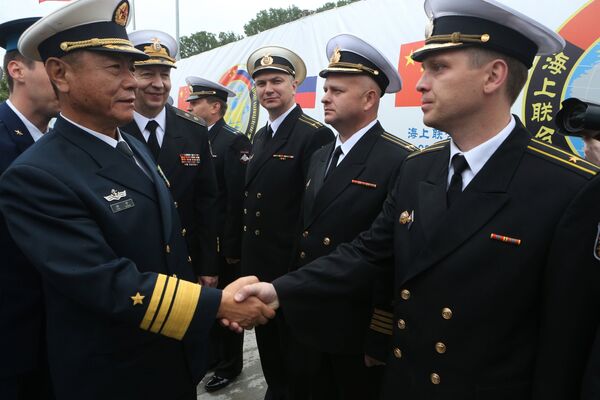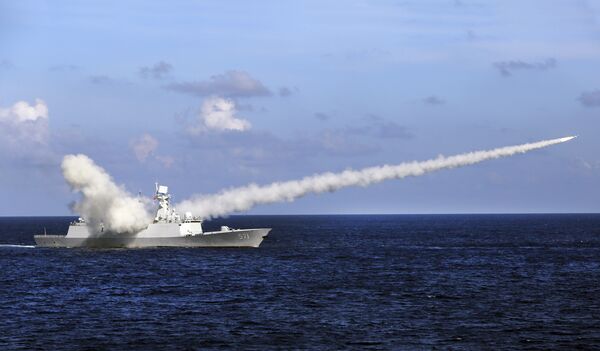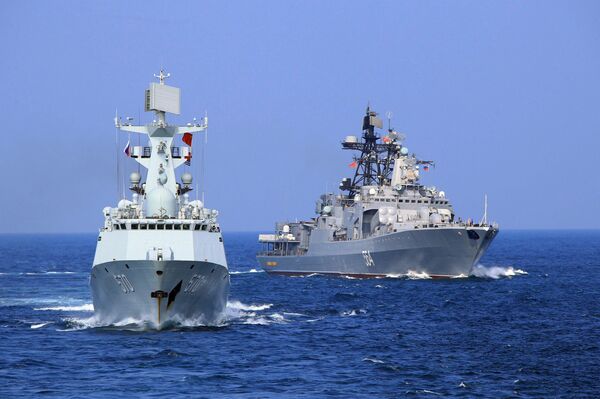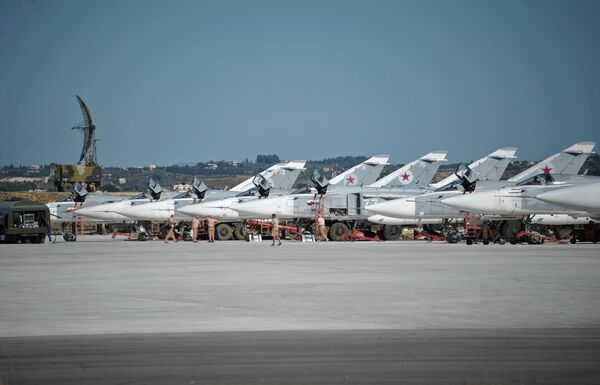On Monday, Russian and Chinese warships kicked off the active naval stage of the Maritime Cooperation-2017 drills, with training set to continue all week until Friday.
The Chinese naval group, which includes the Hefei guided missile destroyer, the Yuncheng frigate and the Lomahu supply ship, entered the Russian Navy port of Baltiysk on Friday, becoming the first Chinese naval group to pay a visit to the Baltic Sea.
Russian and Chinese military officials have said that the main objectives of the drills include increasing the effectiveness of interaction between Russian and Chinese sailors, training to improve coordination between the two countries' naval forces, and joint efforts to counter global threats to national security.

And the cooperation is not just symbolic, either. The Hefei Type 052D guided missile destroyer is among the largest and newest ships in the Chinese Navy. Chinese media have described its missile armament as "among the best in the world."
The Yuncheng also has the distinction of having served in the international anti-piracy mission in the Gulf of Aden, where it gained combat experience.

Russian observers say that the drills are an important sign not just of China's growing naval capabilities, but its intentions. Military analyst Konstantin Sivkov told Radio Sputnik that the Chinese Navy's appearance in the Baltic sends a signal to the entire world that in the event of conflict, Beijing will side with Moscow.
"The very fact of the Chinese Navy's appearance in the Baltic Sea suggests that China plans on interacting with Russia not only in the Far East, but also in other regions, solving the tasks of ensuring national security," Sivkov said.
"It's worth emphasizing that the Chinese Navy currently does not have the infrastructural basis to carry out actions in such remote areas. Nevertheless, they're conducting exercises here. In this way, China is demonstrating to the world that in the event of conflict, it will conduct military operations on Russia's side as its ally," the observer noted.
The missile component of the drills in particular "leave no doubt" that the "smoke signals" being sent by Russia and China through the drills "are addressed to the US and the NATO bloc, whose era of [global] domination is coming to an end," Khrolenko stressed.
In recent years, the two countries have held similar drills in the Mediterranean, the Sea of Japan and the South China Sea, with dozens of warships and aircraft, and hundreds of sailors from both countries working out all types of operations, including everything from amphibious landings to rescue operations. Khrolenko suggested that it was worth noting that each successive drill has been marked by increased complexity in every area, from reconnaissance and communications, to missile and artillery missions, to air and anti-submarine defense and electronic warfare.

Ahead of this week's drills, US and European media released a flurry of alarmist articles on the subject – pointing to NATO navies' efforts to shadow the Chinese vessels as they made their way into the Baltic Sea, engaging in fearmongering about Russia and China's "massive 'mock invasion' near Europe's border," and presenting chilling analyses about China's "global naval ambitions."
One common trend found in many of these articles, according to Khrolenko, is that the Russian-Chinese 'message' to the US and its allies – that Russia and China will support and defend one another, is somehow a bad thing for global security. Meanwhile, "according to US and NATO logic, their military maneuvers all around the globe only serve to 'strengthen democracy,' and do not pose a threat to any neighboring states," the journalist quipped.
Moreover, Khrolenko recalled that while Russia and China have one foreign military base apiece (in Syria and Djibouti, respectively), "the US web of roughly 800…military bases covers the entire planet." Furthermore, he noted, "the transfer and deployment of NATO forces in the Baltic countries, like the US military and political pressure employed in the South China Sea, are aimed against a specific enemy. In this situation, Moscow and Beijing cannot abandon systemic security measures."

Commenting on the nature of Russian-Chinese military cooperation, the Russian ambassador to China, Andrei Denisov, recently said that "the degree of cooperation in the military sphere is a reflection of the degree of political affinity and trust" between the two countries. "If we assess the threats that our two countries are exposed to similarly…it is natural to try to work out methods for repelling these threats."
In other words, Khrolenko noted, any attempt by Western powers to divide or to counterpose Russia and China against one another will remain futile. "On the contrary, common threats – on land and at sea, require new joint efforts between Moscow and Beijing," the journalist concluded.
The Maritime Cooperation drills began in 2012. Since then, exercises of increasing complexity have taken place on a regular basis. The roadmap for future drills has already been laid out up to the year 2020.





